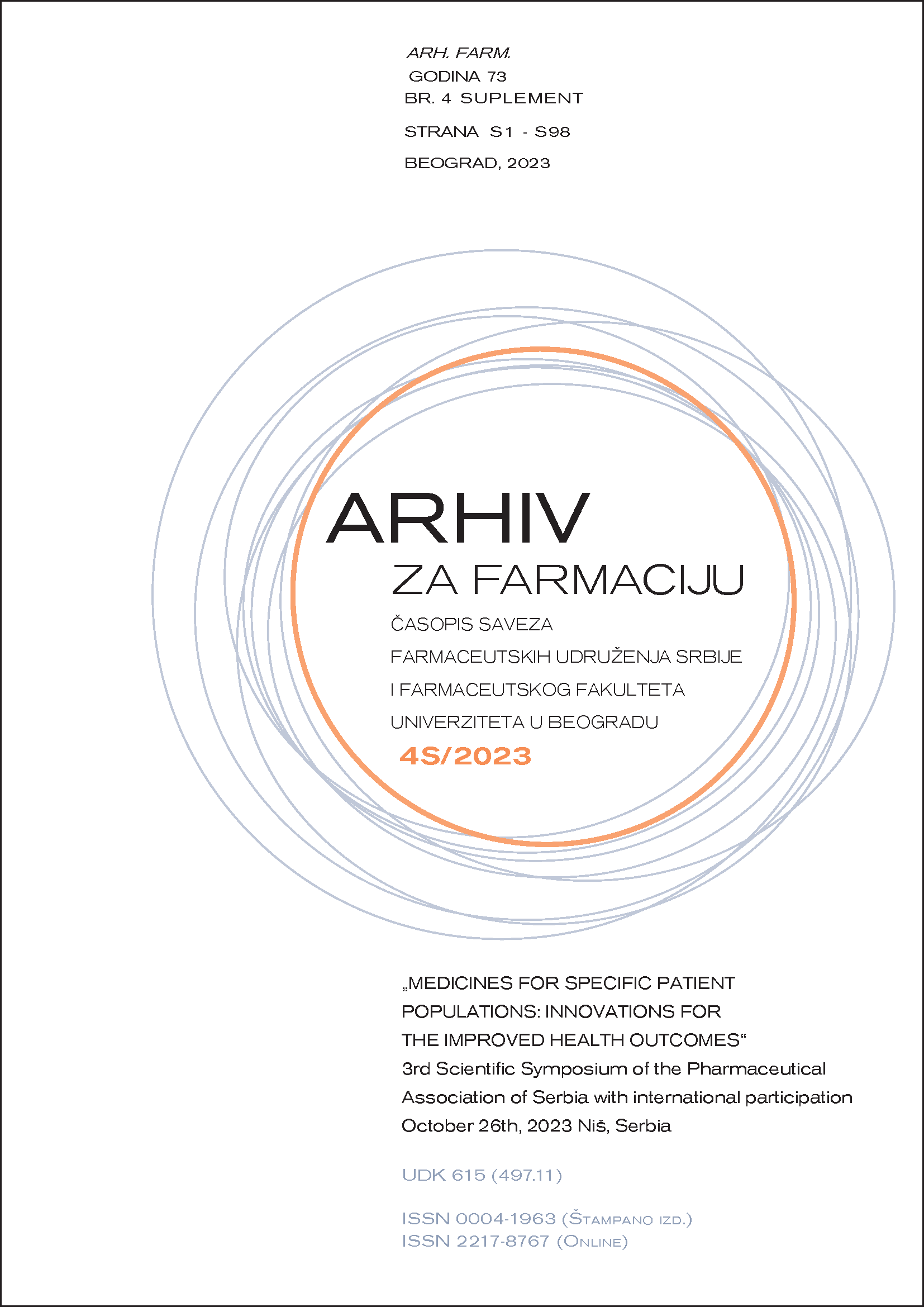DIABETES IN SERBIA: TRENDS IN ANTIDIABETIC DRUG CONSUMPTION FROM 2012 TO 2021
Abstract
As one of the biggest public health challenges, diabetes mellitus represents the reason for the constant pharmacotherapy improvement (1). Modern therapy of diabetes mellitus can alter the course of the disease, prevent complications, and contribute to healthcare savings (2). This study aimed to analyze the consumption of antidiabetic drugs in the Republic of Serbia from 2012 to 2021 and compliance with the recommendations of the National Guide. The consumption of all registered antidiabetic drugs was obtained from publications of the Medicines and Medical Devices Agency of Serbia. For each International Nonproprietary Name (INN), consumption was monitored and expressed in a standardized unit-defined daily dose per 1000 inhabitants per day (DDD/1000 inhabitants/day). During the study period, the highest consumption was observed in 2020, while the lowest was in 2012. Antidiabetic drug consumption in 2021 amounted to 92.18 DDD/1000 inhabitants/day, which is 23.73% higher compared to 2012. The consumption of oral antidiabetics was dominant, on average 4.45 times more than insulin and analogs. The most commonly used drugs until 2017 in total antidiabetic consumption were sulfonylureas and sulfonylurea derivatives, constituting an average of 43.39%. After 2017, metformin took the lead in consumption, reaching 48.75% of total antidiabetic consumption in 2021. New oral antidiabetic drugs do not exceed 0.1% of the total consumption during the examined period. However, sodium-glucose cotransporter-2 (SGLT2) inhibitors (3.19 DDD/1000 inhabitants/day in 2021 compared to 0.001 DDD/1000 inhabitants/day in 2015) noted the most significant increase. The increasing consumption trend is particularly pronounced for metformin and SGLT2 inhibitors. The results indicate compliance in the use of antidiabetic drugs with the National Guide recommendations.
References
1. Suryasa IW, Rodríguez-Gámez M, Koldoris T. Health and treatment of diabetes mellitus. International Journal of Health Sciences. 2021;5(1).
2. Ceriello A, Prattichizzo F, Phillip M, Hirsch IB, Mathieu C, Battelino T. Glycaemic management in diabetes: old and new approaches. Lancet Diabetes Endocrinol. 2022;10(1):75-84.

